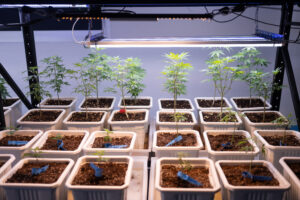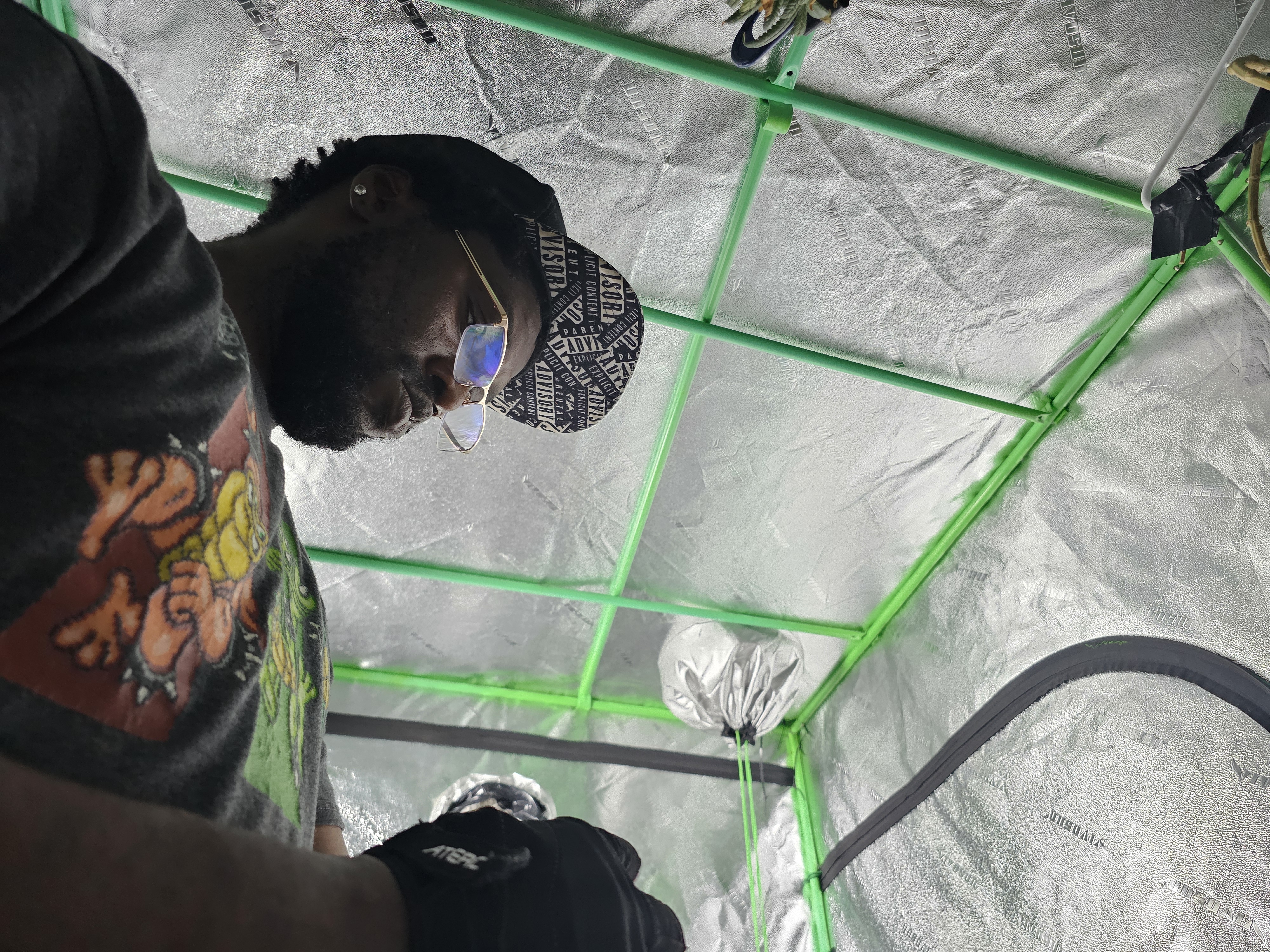
Automating your cannabis garden is a game-changer, reducing daily tasks and ensuring consistent growing conditions. By carefully selecting and integrating the best tech, you can create an ultra-efficient, high-yield, and smooth-running setup. While advanced automation tools can significantly enhance your grow operation’s efficiency and output, it’s crucial to balance investing in equipment with what you and your setup can realistically manage. Stay updated with the latest grow tech trends and continually educate yourself to make informed decisions that align with your grow goals and budget.
Table of Contents
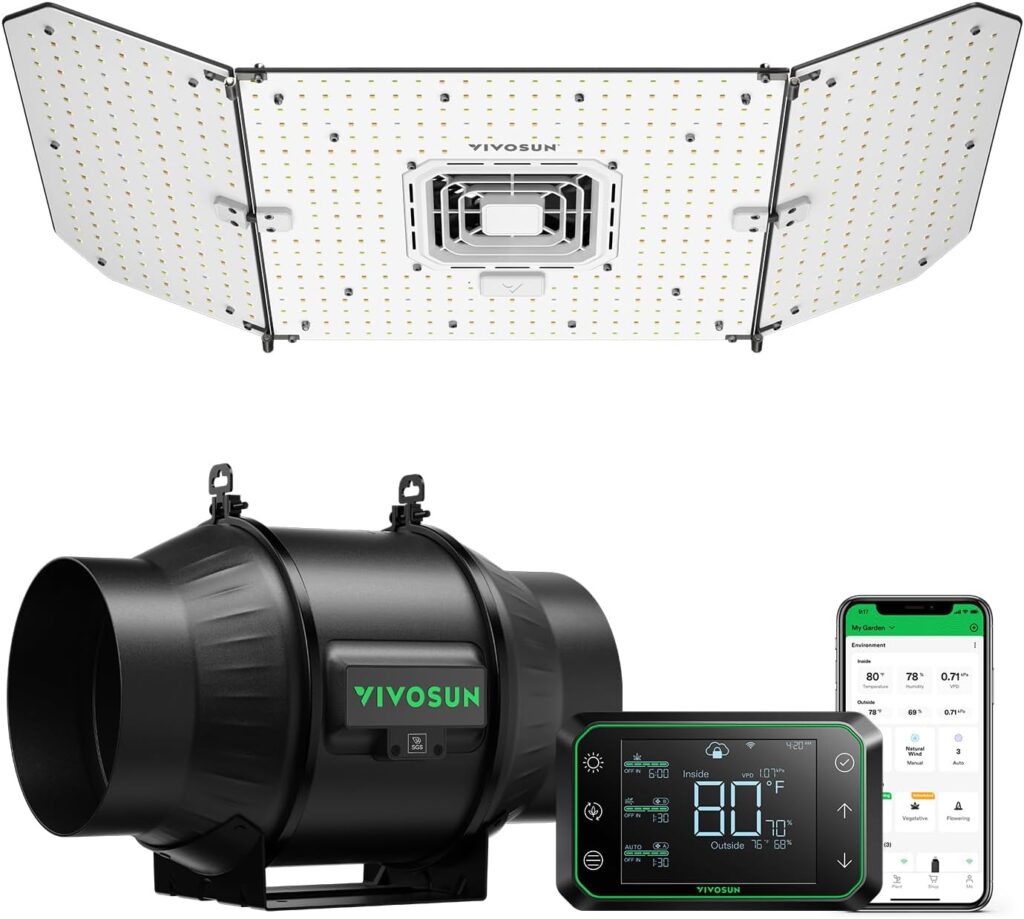
Exploring Lighting Systems Automation in Cannabis Cultivation
Detailed Section on Automated Lighting Systems
Let’s start by exploring cannabis cultivation and the transformative impact of automating grow light systems for a more optimized garden. Central to this advancement are smart LED grow lights and sophisticated light controllers. These technologies collectively enhance the efficiency and effectiveness of cannabis grow operations, ushering in a new era of precision and productivity. Smart LEDs provide customizable light spectrums and intensity adjustments, catering to the specific needs of plants at various growth stages. Meanwhile, advanced light controllers manage these settings seamlessly, optimizing growth conditions and yielding superior results.
Smart LED Grow Lights: A Ray of Precision
Smart LED grow lights are revolutionizing cannabis cultivation by offering the ability to customize light spectrums to meet the specific needs of plants at different growth stages. This flexibility is crucial, as seedlings, vegetative plants, and flowering plants each require different light spectrums for optimal growth. Smart LEDs can be programmed to provide the precise spectrum needed, ensuring healthy development and high yields without constant gardener intervention.
These lights also allow for adjustable intensity, providing gentle illumination for delicate seedlings and increasing brightness as plants mature. This capability helps prevent light burn and protects the plants’ health.
Another key feature is the control of photoperiods, essential for transitioning cannabis from the vegetative stage to flowering. Smart LEDs automate these light and dark cycles, mimicking natural environmental changes and promoting a smooth flowering process.
Additionally, smart LEDs are highly energy-efficient, consuming less power and emitting less heat than traditional lighting options. This efficiency reduces energy costs and cooling requirements, making them a sustainable choice for modern grow operations.
Light Controllers: The Conductors of Illumination
Lighting automation in cannabis cultivation relies on light controllers that manage grow lights, offering a streamlined and efficient approach. This centralized system is especially beneficial for large-scale operations, where manual adjustments are impractical.
Light controllers provide scheduling flexibility, allowing for programming of light sequences, intensity, and spectrum adjustments to suit different growth stages. They can also integrate with other systems like climate control and irrigation, creating a cohesive and efficient grow environment.
This implementation represents a significant shift in optimizing the grow environment, with smart LED grow lights and light controllers enhancing precision, efficiency, and harmony, ultimately leading to higher yields and better product quality.
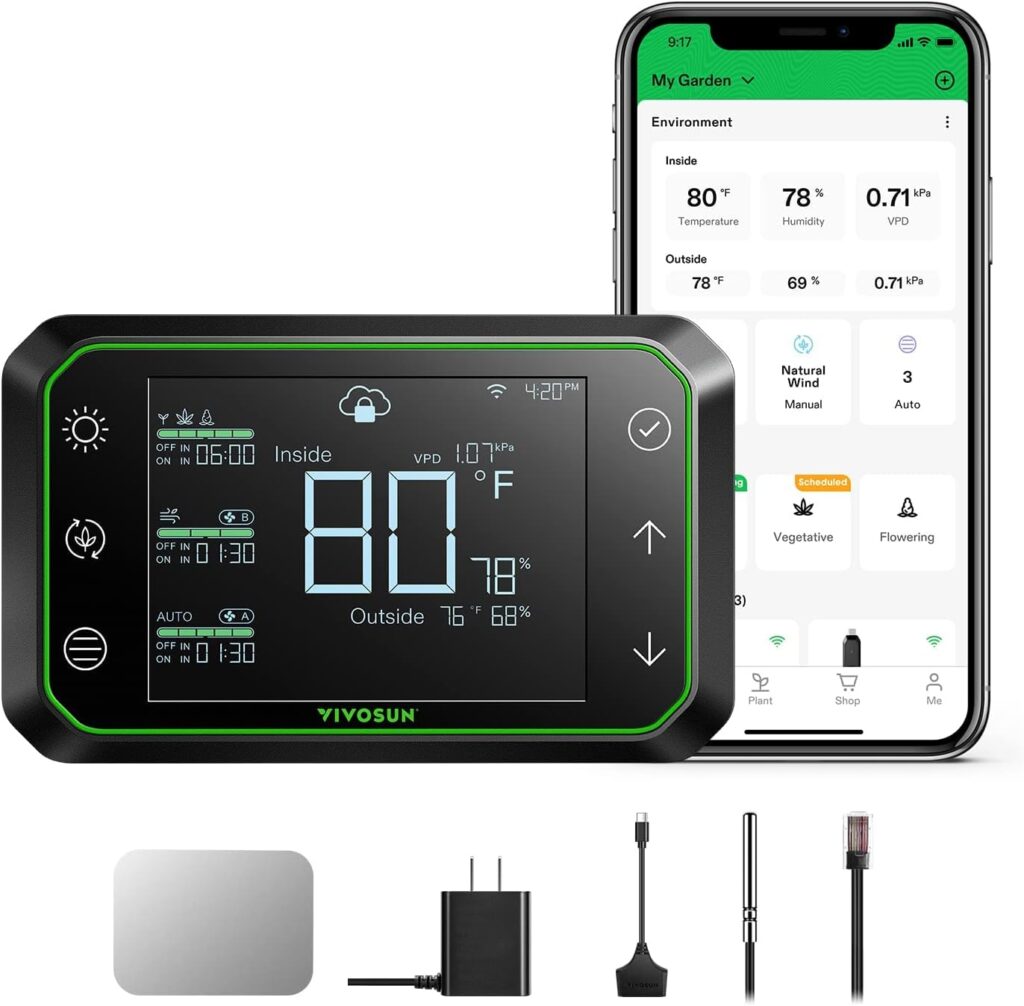
Exploring Climate Control Automation in Cannabis Cultivation
Detailed Section on Climate Control Automation
The journey into cannabis cultivation reveals the critical importance of climate control in influencing plant health, growth rate, and yield. Maintaining an environment where temperature and humidity are perfectly balanced is essential for optimizing photosynthesis, transpiration, and overall plant metabolism. The introduction of automation in climate control has revolutionized the process, replacing manual adjustments with consistent and precise management.
This discussion centers on the integration of smart thermostats with humidifiers and dehumidifiers equipped with humidistats. These advanced technologies are key to automating climate control, ensuring a stable and optimal grow environment. Smart thermostats regulate temperature, while humidifiers and dehumidifiers maintain ideal humidity levels, creating conditions that support vigorous plant growth and maximize yields
Smart Thermostats: Guardians of Temperature
Smart thermostats play a crucial role in maintaining ideal temperatures in the grow room. They adjust temperatures automatically based on the specific needs of cannabis plants at different growth stages—cooler for flowering and warmer for vegetative growth. This automation replaces the need for manual adjustments, ensuring plants are consistently in optimal conditions for growth.
The advantage of remote monitoring and control makes these devices even more valuable. Connected to smartphones or computers, smart thermostats allow cultivators to manage temperatures remotely, which is essential for addressing unexpected changes or when they cannot be physically present.
Additionally, smart thermostats promote energy efficiency by optimizing heating and cooling cycles based on external conditions and predefined settings. This helps reduce energy consumption, making the grow operation more environmentally friendly and cost-effective.
Humidifiers/Dehumidifiers with Humidistats: Masters of Moisture
Achieving the ideal humidity level in cannabis cultivation involves precise control managed by humidifiers and dehumidifiers, monitored by humidistats. These devices prevent mold and mildew and ensure proper transpiration and nutrient uptake. Humidity levels need to be higher during the vegetative stage and lower during flowering to avoid bud rot.
Automated systems, guided by humidistats, adjust humidity as needed, maintaining a consistent environment crucial for plant health and yield. Integration with broader automation systems ensures efficient operation, conserving energy and reducing costs. This technological setup allows cultivators to optimize plant growth and yields while maintaining sustainability and operational efficiency.
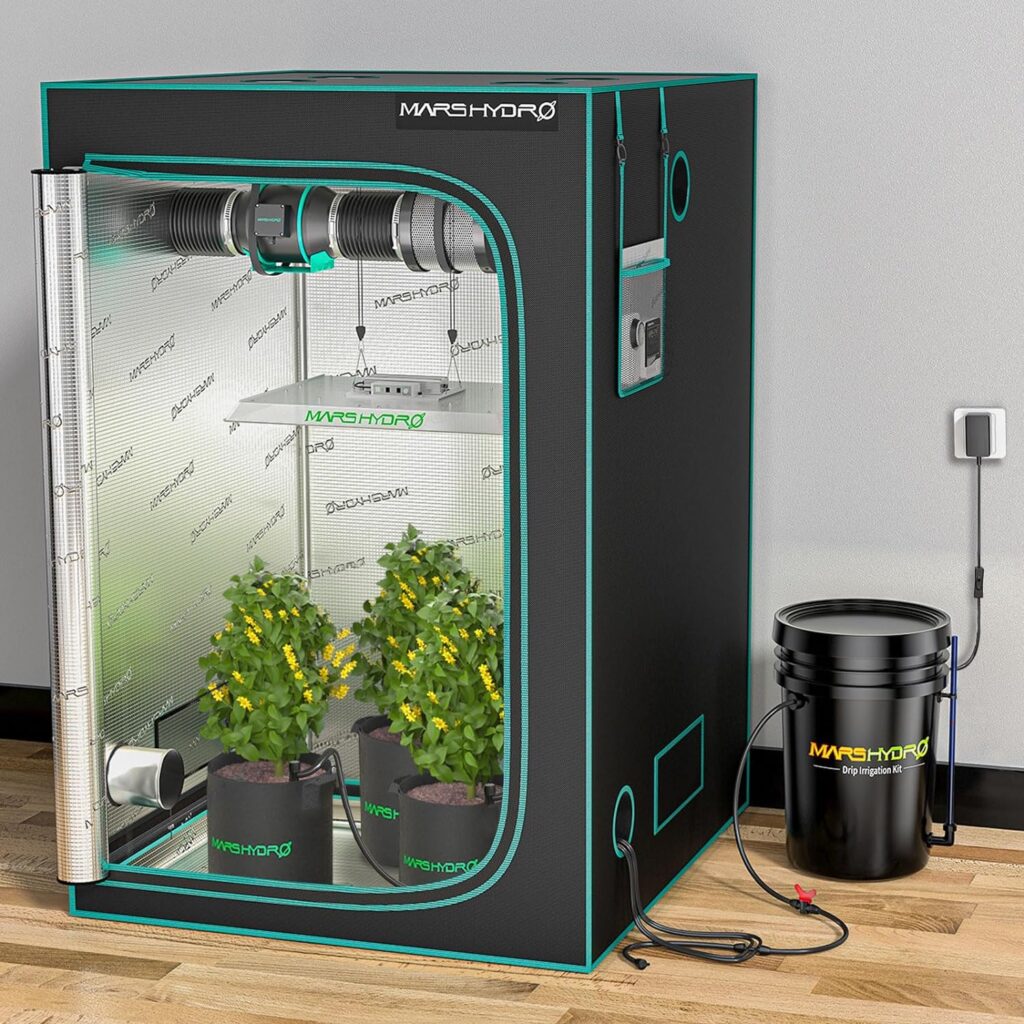
Expanding on Automated Watering and Nutrient Systems in Cannabis Cultivation
Detailed Section on Automated Watering and Nutrient Systems
The evolution of cannabis cultivation has been significantly influenced by advancements in automated systems, particularly in watering and nutrient delivery. The shift towards automated systems marks a new era of precision and consistency, overcoming the challenges of manual care that often result in over or underwatering and nutrient imbalances. This section explores the mechanics and advantages of drip irrigation systems and automated nutrient dosers, which are essential components of an efficient automated watering and nutrient strategy. These technologies ensure that plants receive consistent care, optimizing growth conditions and enhancing overall yield quality.
Drip Irrigation: A Pattern of Precision Watering
Drip irrigation is an efficient watering method that delivers water directly to the root zone of each plant, minimizing waste and reducing the risks of over or underwatering. This precise delivery system promotes healthy plant growth and helps prevent water-related issues like root rot.
A key feature of drip irrigation is automated scheduling, which allows for programming water delivery at specific intervals. This automation caters to the varying water needs of cannabis plants throughout their life cycle, freeing cultivators from manual watering tasks. It ensures consistent hydration even when the cultivator is not present.
Additionally, drip irrigation is highly efficient in conserving water resources. By targeting water directly to the plants, it reduces overall water usage, lowers operational costs, and supports sustainable cultivation practices.
Nutrient Dosers: Masters of Customized Nutrition
Automated nutrient dosers significantly enhance the precision of nutrient delivery in cannabis cultivation. These systems eliminate guesswork by accurately measuring and mixing nutrients according to specific plant needs or predetermined recipes, ensuring optimal health and yield.
The key benefits of nutrient dosers are their consistency and accuracy, preventing nutrient imbalances and promoting uniform plant growth. Integration with other cultivation systems allows for real-time monitoring and adjustments, making the process responsive to the plants’ changing needs.
This technology, combined with automated watering systems like drip irrigation, minimizes waste and maximizes growth potential. It streamlines cultivation practices, allowing cultivators to focus on other critical aspects of their operation, setting a new standard for efficiency and precision in cannabis cultivation.
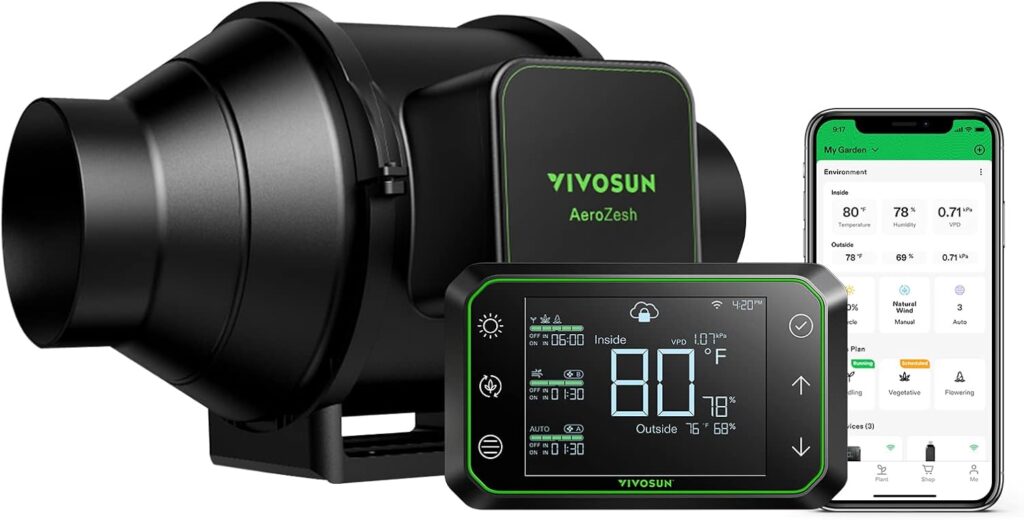
The Role of Smart Ventilation in Modern Cannabis Cultivation
Detailed Section on Smart Ventilation, Airflow, and Humidity Systems
In the specialized field of cannabis cultivation, the integration of smart ventilation, airflow, and humidity control systems represents a significant advancement towards precision agriculture. These cutting-edge technologies play a crucial role in creating and maintaining an optimal grow environment, which is essential for the health and productivity of cannabis plants. By automating climate control, these systems ensure consistent conditions, effectively reducing the risk of common issues such as mold, mildew, and pest infestations.
This automation not only streamlines the cultivation process but also enhances growth efficiency and the quality of the final yield. By precisely managing factors like temperature, humidity, and air circulation, cultivators can provide a stable environment that supports robust plant growth and maximizes yield quality. The adoption of these systems marks a major step forward in modern cannabis cultivation, aligning with the broader trend towards smart, data-driven agriculture practices.
Smart Ventilation Systems: Breathing Life into Grow Spaces
The core function of smart ventilation systems is to automate air exchange, ensuring a constant flow of fresh air into the grow room while expelling stale air. This process is crucial for maintaining the right balance of oxygen and carbon dioxide, essential for healthy photosynthesis in plants.
These systems often feature variable speed controllers that allow precise adjustments to exhaust fan speeds. This capability is especially useful during periods of high temperatures or humidity, enabling the efficient removal of excess heat and moisture.
The integration of smart ventilation with other environmental controls exemplifies the advancements in automated grow room management. This integration allows for coordinated responses to environmental changes, with ventilation adjustments occurring in sync with temperature and humidity shifts. This harmonious operation ensures optimal growing conditions are maintained, promoting plant health and maximizing yield potential.
Automated Airflow Management: Cultivating Equilibrium
Effective airflow management in a grow space goes beyond simple air exchange; it involves ensuring even air distribution throughout the area. This uniformity prevents the formation of microclimates, providing all plants with equal access to fresh air and CO2. Modern oscillating fans, controlled by smart systems, adjust their operation based on real-time environmental data to optimize air movement.
Proper airflow management helps prevent hotspots and reduces variations in humidity levels, which is crucial for minimizing the risk of mold growth and pest infestations. These issues often arise in areas with stagnant air and uneven humidity, making consistent airflow essential for maintaining a healthy growing environment.
Smart Humidity Control Systems: Mastering Moisture
The introduction of smart humidity control systems revolutionizes the task of regulating grow room moisture levels. By harnessing humidifiers and dehumidifiers, these systems autonomously adjust the ambient humidity to maintain it within the ideal spectrum for cannabis cultivation.
The integration of humidity controls with the ventilation framework enhances the system’s efficacy. In instances of elevated humidity, an increased rate of air exchange aids in moisture reduction. Conversely, should the air veer towards dryness, a calibrated reduction in ventilation, in conjunction with humidification, can elevate humidity to the desired level.
The deployment of smart ventilation, airflow, and humidity systems within cannabis cultivation is emblematic of a broader shift toward automated, precision-driven agriculture. These technologies not only streamline the maintenance of optimal grow conditions but also alleviate the labor and complexity associated with manual environmental adjustments. By fostering a consistently ideal climate, smart systems underscore their indispensable role in the pursuit of maximizing plant health, operational efficiency, and yield quality in modern cannabis cultivation.
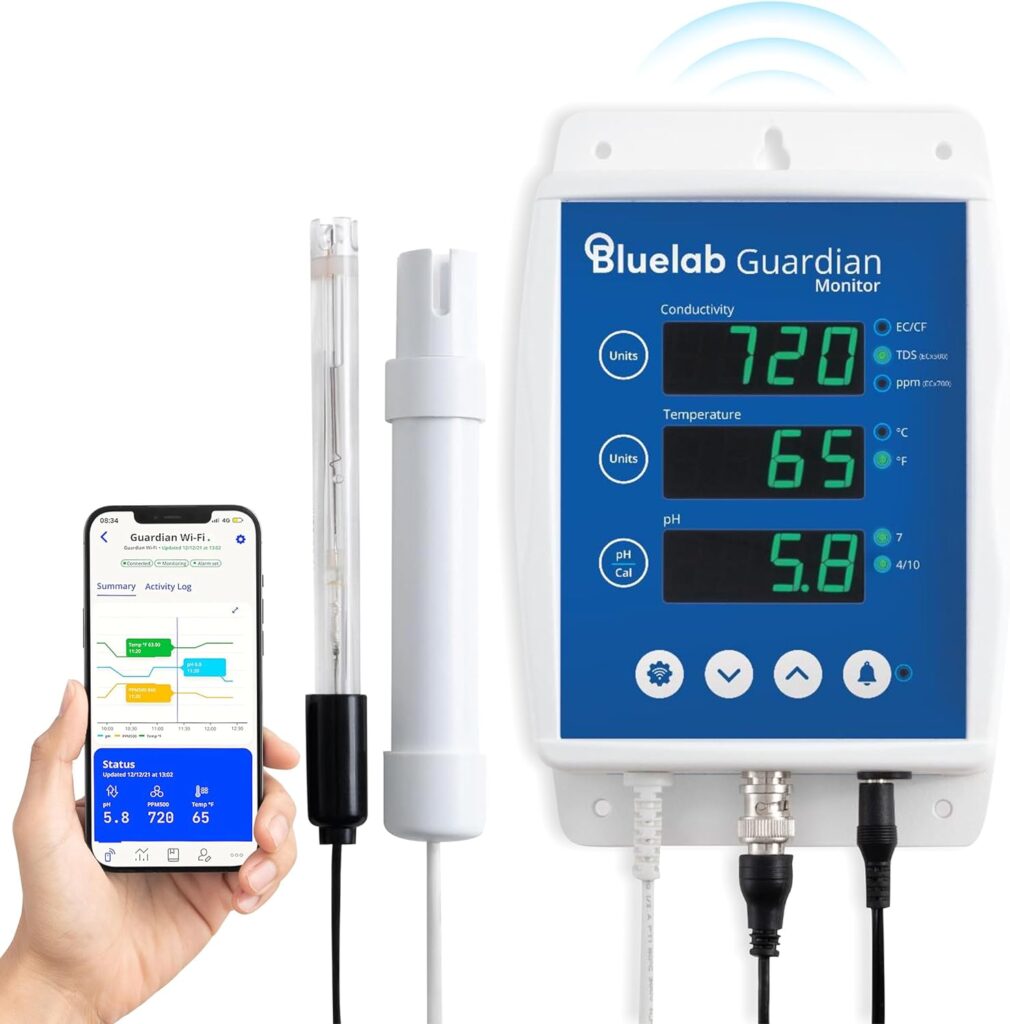
pH and EC Monitoring and Adjustment Systems in Cannabis Cultivation
Detailed Section on pH and EC Monitoring and Adjustment
In cannabis cultivation, the landscape of precision agriculture is increasingly shaped by advanced technologies designed to optimize plant growth and health. Among these technologies, automated pH and EC monitoring and adjustment systems are particularly crucial. These systems play a key role in maintaining the optimal nutrient solution composition, ensuring that plants receive the correct balance of nutrients. By continuously monitoring and adjusting pH levels and electrical conductivity, these systems prevent nutrient imbalances, which can lead to deficiencies or toxicities, thereby enhancing overall crop quality and yield.
Automated pH Controllers: Ensuring Nutrient Bioavailability
Automated pH controllers are essential in nutrient management, continuously monitoring pH levels in the nutrient solution and providing real-time data crucial for optimal nutrient absorption. Maintaining the right pH level is vital as it directly affects a plant’s ability to absorb nutrients, influencing its overall health and productivity.
These controllers do more than just monitor; they automatically correct pH imbalances by adding precise amounts of pH adjusters, preventing issues like nutrient lockout or toxicity. This automation simplifies the cultivation process, eliminating manual adjustments and ensuring consistent conditions.
Additional features, such as data logging and alert systems, further enhance their utility. They allow for historical analysis of nutrient solution stability and enable quick responses to any issues, ensuring uninterrupted plant growth and maximizing yields.
Automated EC Controllers: Balancing Nutrient Concentrations
Automated EC controllers, alongside pH controllers, regulate the electrical conductivity of the nutrient solution, indicating its total soluble salt content. They maintain optimal EC levels, ensuring plants receive the right amount of nutrients, and avoiding deficiencies or excesses.
These systems adjust nutrient concentrations in real-time. If the solution is too concentrated, it is diluted with water; if too diluted, nutrient concentrates are added. This integration with irrigation systems allows for precise nutrient delivery, optimizing plant health and yield.
The implementation of automated pH and EC systems enhances control over nutrient management, increasing efficiency and ensuring high-quality cannabis production. This technology simplifies the cultivation process and advances precision agriculture standards.

Environment Monitoring Systems in Cannabis Cultivation
Detailed Section on Environment Monitoring Systems
Environmental monitoring is essential in modern cannabis cultivation, allowing growers to precisely tailor grow space conditions to the specific needs of their plants. By utilizing advanced automated systems, the cultivation process advances beyond traditional methods, achieving an exceptional level of precision and control. This technology enables real-time adjustments and monitoring, ensuring optimal growth conditions and maximizing plant health and yield.
Smart Environmental Sensors: The Backbone of Precision Agriculture
Smart environmental sensors play a crucial role in cannabis cultivation, acting as the eyes and ears of the grow operation. They continuously monitor key variables such as temperature, humidity, CO2 levels, and light intensity. This constant data collection provides a detailed overview of the grow environment, enabling real-time adjustments to optimize conditions for plant growth.
Beyond simple data collection, these sensors offer real-time alerts and monitoring, keeping growers informed about the status of their environment. This immediate feedback is essential for quickly addressing any issues that arise, protecting plant health, and maintaining optimal growing conditions.
The data gathered over time also allows for deep analysis, helping growers identify patterns and trends. This information can be used to refine and enhance the cultivation process, such as adjusting lighting schedules or controlling humidity levels. The insights gained from this data-driven approach lead to more informed decisions, ultimately boosting plant vitality and yield.
CO2 Enrichment Systems: Elevating Photosynthesis to New Heights
CO2 enrichment systems work hand-in-hand with smart environmental sensors to maintain an ideal atmosphere, crucial for maximizing photosynthetic efficiency. These systems provide a steady supply of CO2, which is essential for plant growth, accelerating development and increasing yields.
Automation in CO2 management allows for real-time adjustments based on environmental data, ensuring CO2 is released precisely when needed. This targeted approach optimizes resource use and enhances plant growth while minimizing waste.
Integration with ventilation systems highlights a comprehensive approach to managing the grow environment. It ensures that CO2 levels remain optimal while maintaining air quality and safety within the grow space.
The adoption of automated environmental monitoring systems marks a significant advancement in cannabis cultivation. By leveraging technology to maintain optimal conditions, growers can achieve greater efficiency, higher yields, and superior product quality. This shift in cultivation practices not only supports scalability and sustainability but also sets a new benchmark for precision in agriculture.
The Importance of Automation in Cannabis Cultivation
The march of progress in cannabis cultivation has been markedly accelerated by the advent of automation technologies. These innovations have revolutionized the cultivation landscape, enabling a leap forward in efficiency, consistency, and the sheer quality of the final product. Through the detailed exploration of automated systems—spanning the gamut from lighting and climate control to ventilation, watering, nutrient delivery, pH and EC monitoring, environment monitoring, and even security—it becomes evident how each element contributes vitally to fostering the optimal growth conditions for cannabis.
The advantages of integrating automation into cannabis cultivation are multifaceted and profound:
- Enhanced Efficiency and Productivity: Automation streamlines the cultivation process, drastically reducing the need for manual labor. This efficiency not only facilitates the management of larger-scale operations but also frees up cultivators to focus on strategic planning and operational improvements, thereby bolstering productivity and scalability.
- Unmatched Consistency and Precision: The precision offered by automated systems ensures that cannabis plants are nurtured in consistently ideal conditions throughout their growth cycle. Such control, from precise light spectrums to optimal climate conditions, is instrumental in eliminating the variability inherent in manual processes.
- Optimized Resource Utilization: By meticulously regulating resource delivery—whether it be water, nutrients, or energy—automation systems play a crucial role in minimizing waste. This precision contributes to reduced operational costs and promotes a more sustainable approach to cannabis cultivation.
- Elevated Plant Health and Yields: The end goal of automation is to cultivate healthier plants that yield more abundantly. Through comprehensive control over the grow environment, automation systems ensure that plants can achieve their full genetic potential, free from stress and environmental inconsistencies.
- Data-Driven Insights for Continuous Improvement: Equipped with data analytics capabilities, automated systems provide valuable insights into the effectiveness of cultivation strategies. This data is a goldmine for informed decision-making, enabling continuous refinement and optimization of cultivation practices.
Conclusion
Automating your cannabis grow space can significantly enhance the efficiency and consistency of your cultivation efforts, providing a more controlled environment and reducing the manual labor involved. By integrating systems like automated lighting, irrigation, and climate control, you can optimize plant growth, improve yields, and streamline your operations.
For further insights into optimizing your grow space, consider exploring the nuances of plant lighting, a critical component of any successful automation setup. Understanding the interplay between lighting and plant development is essential for achieving the best possible outcomes. Check out our detailed guide on Mastering Plant Lighting for Optimal Growth to dive deeper into this vital aspect.
Additional Resources:
- Grow That Sh!t Better by Maximus Reigns – An essential eBook for both novice and experienced growers, offering advanced techniques and tips for improving cannabis cultivation.
- Cannabis Growers’ Handbook by Ed Rosenthal – A comprehensive guide that covers all aspects of growing cannabis, from setup to harvest.
- Royal Queen Seeds Blog – A rich resource for growers, featuring articles on growing techniques, strain information, and more.
- Need Cannabis Seeds? – Seedsman Seeds has a variety of seeds for all growers from new and seasoned to medical and CBD users.
- Grow Weed Easy – A website dedicated to providing step-by-step guides and resources for growing cannabis at home.
Embrace the future of cannabis cultivation by automating your grow space and enhancing every stage of your plant’s development. This approach not only saves time and effort but also ensures a consistent and high-quality harvest. Happy growing!
